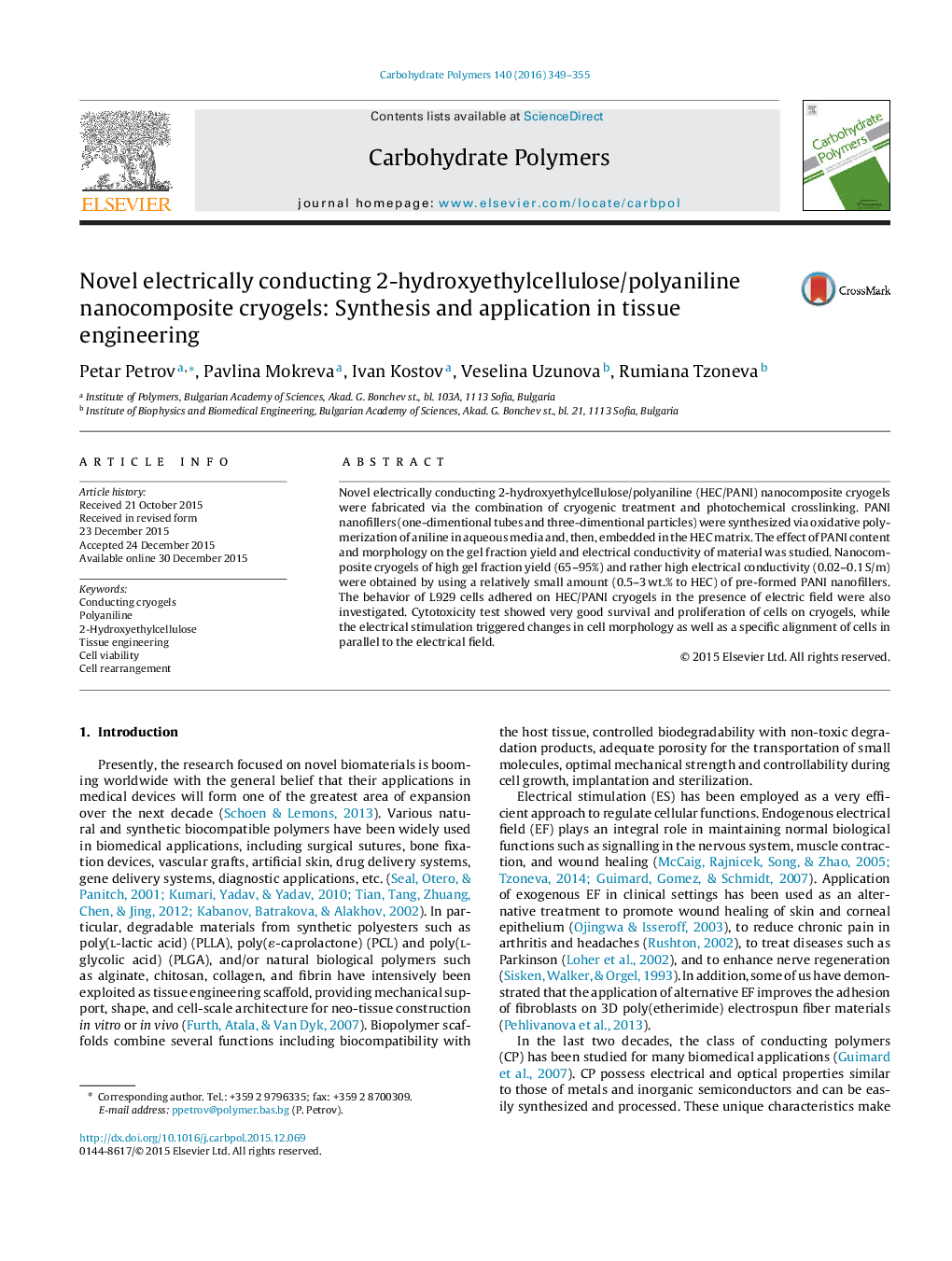| کد مقاله | کد نشریه | سال انتشار | مقاله انگلیسی | نسخه تمام متن |
|---|---|---|---|---|
| 1383469 | 1500618 | 2016 | 7 صفحه PDF | دانلود رایگان |
• HEC/PANI cryogels are prepared via cryogenic treatment and photo-crosslinking.
• Cryogels exhibit rather high electrically conductivity in the 0.02–0.1 S/m range.
• Very good survival of L929 cells on HEC/PANI cryogels is found.
• Electrical field stimulation causes alignment of cells into 1D structures.
Novel electrically conducting 2-hydroxyethylcellulose/polyaniline (HEC/PANI) nanocomposite cryogels were fabricated via the combination of cryogenic treatment and photochemical crosslinking. PANI nanofillers (one-dimentional tubes and three-dimentional particles) were synthesized via oxidative polymerization of aniline in aqueous media and, then, embedded in the HEC matrix. The effect of PANI content and morphology on the gel fraction yield and electrical conductivity of material was studied. Nanocomposite cryogels of high gel fraction yield (65–95%) and rather high electrical conductivity (0.02–0.1 S/m) were obtained by using a relatively small amount (0.5–3 wt.% to HEC) of pre-formed PANI nanofillers. The behavior of L929 cells adhered on HEC/PANI cryogels in the presence of electric field were also investigated. Cytotoxicity test showed very good survival and proliferation of cells on cryogels, while the electrical stimulation triggered changes in cell morphology as well as a specific alignment of cells in parallel to the electrical field.
Journal: Carbohydrate Polymers - Volume 140, 20 April 2016, Pages 349–355
